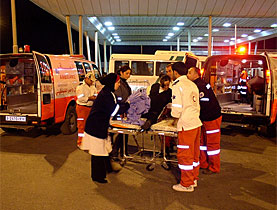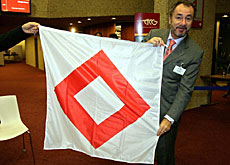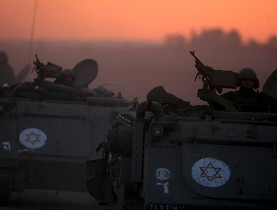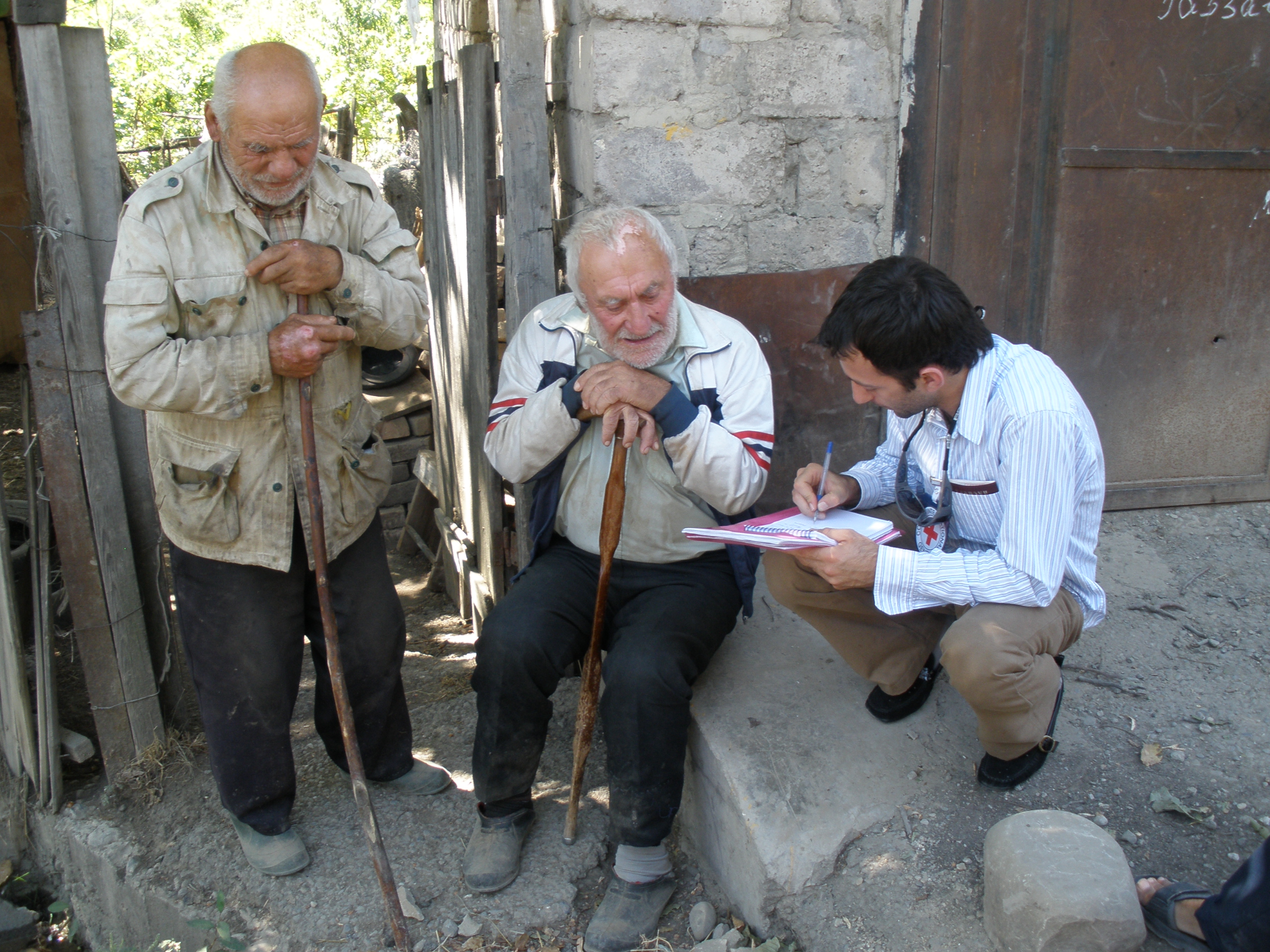Medical help for Palestinians still a challenge

While political divisions refuse to heal, Israeli and Palestinian medical relief groups are trying to overcome numerous hurdles through evolving cooperation.
A Memorandum of Understanding signed by the Palestine Red Crescent Society (PRCS) and Magen David Adom (MDA) of Israel marks its fourth anniversary this week.
Facilitated by Swiss Foreign Minister Micheline Calmy-Rey, the agreement paved the way for the admission of the two neighbouring organisations to the International Federation of the Red Cross and Red Crescent Societies in June 2006.
A formal acknowledgement of both the progress and the road ahead was provided on Monday. Meeting in Nairobi, Kenya, the Council of Delegates of the International Red Cross and Red Crescent Movement received the latest report by Finland’s former Foreign Minister Pär Stenbäck, who was appointed as an independent monitor to oversee the implementation of the agreement.
While highlighting progress in cooperation between the two organisations, Stenbäck stated that access for West Bank residents to specialised hospitals in Arab East Jerusalem remained a challenge.
“The remarks that we got from the floor were that the report is much better than expected, in view of the war in Gaza and in view of what’s been happening in the Middle East,” Mohammed al-Hadid, chairman of the Standing Commission, told swissinfo.ch by phone from Nairobi. “But of course, we’re not satisfied until it’s fully implemented.”
Even years before the agreement was signed in 2005 there was limited cooperation between MDA and PRCS on certain issues, and this continued through all the upsurges in violence in the region.
Access issues
Yet a number of practical issues still require coordination, including the free passage of Red Crescent ambulances throughout the Palestinian territories and through checkpoints, as well as access to Jerusalem and the transfer of patients from the Gaza Strip to East Jerusalem.
At its core, the Swiss-brokered pact aims at the demarcation of each organisation’s jurisdiction based on the Green Line [1949 armistice lines drawn between Israel and its neighbours]. Apart from difficulties in Hebron, the PRCS ambulances generally move freely across the West Bank.
However, East Jerusalem seems to be the accord’s twilight zone.
“MDA became a problem for us because MDA now ask us to go to the dirty work,” said Amin Abu Ghazaleh, PRCS Head of Emergency Department, referring to areas in East Jerusalem where regulations require Israeli ambulances to have a military escort – a practice which often causes serious delays.
In such cases, a Red Crescent ambulance might be sent instead, but the delay could pose a risk to patients’ lives for which the Red Crescent is blamed, says Abu Ghazeleh.
But according to Noam Yifrach, chairman of the MDA executive committee, “whoever calls us and asks for an ambulance, we send him an ambulance. We don’t transfer the call to the Palestinian Red Crescent”.
“They would like to operate more freely in East Jerusalem, but there are some limitations,” he said. “According to Israeli law, it is MDA that’s responsible for providing the service.”
Ambulance station
The establishment of a Red Crescent dispatch station in East Jerusalem was one of the agreement’s main achievements, mainly thanks to MDA’s lobbying with Israeli authorities. The five Red Crescent ambulances, parked next to four ambulances of the nearby Red Crescent Maternity Hospital, bear yellow Israeli license plates and are approved by the Israeli authorities.
They evacuate inhabitants of Arab East Jerusalem to the hospitals in this part of the city. PRCS says that since July they are also allowed to take Israeli-ID-carrying patients to hospitals in the west of the city, which are considered better, as well as to hospitals outside Jerusalem.
But when it comes to West Bank patients, the process entails a long, cumbersome chain of phone calls which can take up to two hours before an ambulance gets the go ahead.
The solution, nicknamed “back-to-back”, involves two ambulances, each coming from the other side of the checkpoint, transferring the patient – often an emergency case – from one to another. This practice was already in use prior to the agreement.
“There are no problems of passage of Red Crescent ambulances between the territories and Jerusalem,” argued Yifrach. But “sometimes there are mishaps” he says. “In 99 per cent of the cases we checked they had simply brought patients who aren’t in an emergency condition.”
Slow progress
Both organisations say they are genuinely interested in cooperation, but on the ground, there has been no magical transformation. “There is some progress, but it’s very slow,” said Imran Shawish, who is in charge of dispatch and movement at the Jerusalem Red Crescent.
A large part of the problem appears to be Israel’s conflicting wishes of reinforcing humanitarian aid while maintaining control over Palestinian movement.
“As long as Israel is an occupier, it’s responsible for providing (the territories’ residents with) both health services and accessibility,” said Ran Yaron of the Israeli NGO Physicians for Human Rights.
“We demand that Israel allow full freedom of movement to Palestinian medical crews in practice.”
The Red Crescent’s service in East Jerusalem is insufficient, he adds. His solution is for the MDA to be improved to match the level of that provided in the west of the city – until a comprehensive political pact is reached.
Ido Liven in Israel, swissinfo.ch
The decision to admit Magen David Adom and the Palestine Red Crescent Society to the Red Cross movement in 2006 paved the way for the introduction of a third symbol – the red crystal.
The emblem was designed as part of complicated, long running negotiations to include Israel in the Red Cross movement without giving the red shield used by Magen David Adom (MDA) – similar to the star on the Israeli flag – the same status as the cross and the crescent.
The red crystal on a white background, which officially came into force in 2007, is intended to provide protection to relief workers operating in conflict zones.
The red cross emblem, which was officially approved in 1864, is based on the Swiss flag with the colours reversed.
The red crescent was adopted during the war between Russia and the Ottoman Empire (1876-1878). It is based on the Turkish flag, with the colours switched.

In compliance with the JTI standards
More: SWI swissinfo.ch certified by the Journalism Trust Initiative




You can find an overview of ongoing debates with our journalists here . Please join us!
If you want to start a conversation about a topic raised in this article or want to report factual errors, email us at english@swissinfo.ch.